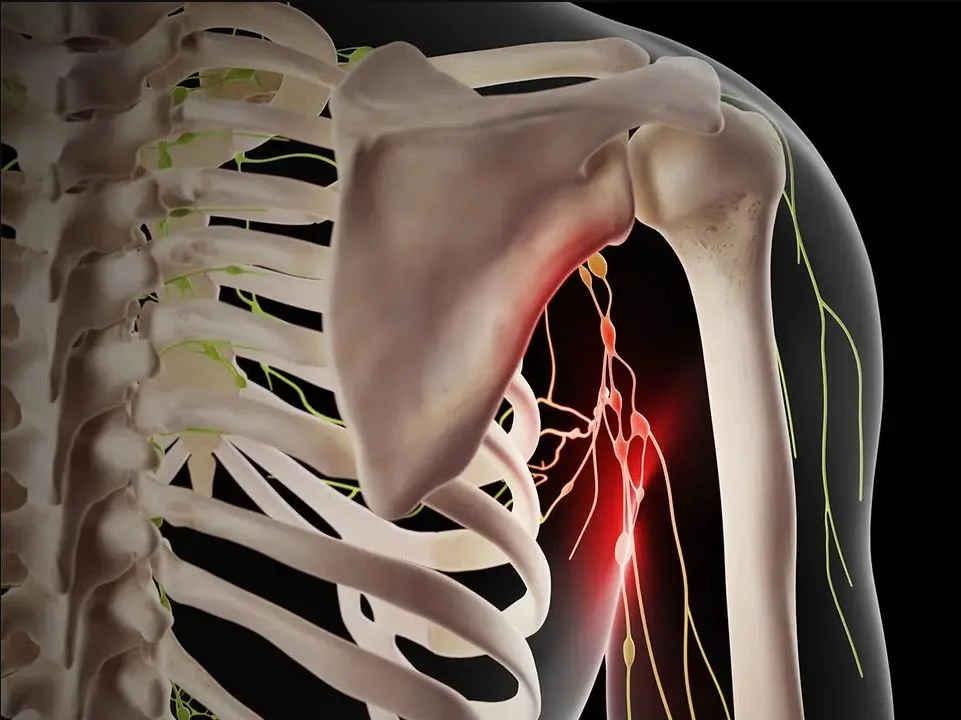Evidence Strengthens for De-Escalating Axillary Surgery in Breast Cancer
The concept of skipping axillary lymph node dissection (ALND) in some patients with breast cancer was supported by a European noninferiority trial.
Among patients with early-stage, node-negative breast cancer and one or two sentinel node macrometastases, those who underwent sentinel node biopsy only had noninferior 5-year recurrence-free survival compared with peers who got more extensive dissection (89.7% vs 88.7%, P<0.001 for noninferiority), reported Jana de Boniface, MD, PhD, of Capio St. Göran's Hospital in Stockholm, Sweden, and colleagues of the SENOMAC trial.
Subgroup analyses demonstrated the noninferiority of sentinel node biopsy only for all relevant subgroups. The one exception was patients with estrogen receptor-positive, HER2-positive disease, in which sentinel node biopsy only appeared to be superior.
"This trial provides robust evidence that the omission of completion axillary-lymph-node dissection was safe in patients with clinically node-negative T1, T2, or T3 breast cancer and one or two sentinel-node macrometastases who received adjuvant systemic treatment and radiation therapy according to national guidelines," de Boniface and colleagues wrote in the New England Journal of Medicine.
SENOMAC thus supports the older ACOSOG Z0011 and AMAROS EORTC 10981-22023trials that had shown no benefit of completion ALND in patients with clinically node-negative breast cancer and sentinel lymph node metastases. Those trials had limited statistical power, however, and uncertain nodal radiotherapy target volumes.
The research team led by de Boniface sought to validate results from those previous studies with a sufficiently large cohort that was focused on patients with sentinel node macrometastases, and included important underrepresented subgroups, such as those undergoing mastectomy, those with sentinel node extracapsular extension or T3 tumors, and men.
Kandace McGuire, MD, of Virginia Commonwealth University in Richmond, commented that with its large sample size and representative patient sample, the study "adds considerable robustness to the already-accrued data."
"It is clear that the role of axillary dissection is rapidly disappearing," she wrote in an editorial accompanying the study. However, axillary staging is vital when it comes to decisions about appropriate breast-cancer therapy, she added.
"Given the consistent data showing little value to axillary dissection in diverse clinical scenarios, the question remains: In an era of advanced diagnostic imaging, genomic assays, and ever-improving adjuvant and neoadjuvant therapies, is any axillary surgery necessary?" she asked. "As we search for less invasive methods that have lower associated morbidity but equivalent benefit, surgical axillary staging continues to be an important part of the multidisciplinary management of breast cancer."
The SENOMAC trial was conducted across 67 centers in Sweden, Denmark, Germany, Greece, and Italy, and included a per-protocol population of 2,540 patients, 1,335 of whom were assigned to undergo sentinel node biopsy only and 1,205 to undergo completion ALND.
Patients had a median age of 61 years, with those 65 years or older accounting for 39.6% of patients in the sentinel node biopsy only group and 41.2% in the dissection group. About one-third of patients had lymph node extension. Most (64%) underwent breast-conserving surgery, with the remainder undergoing mastectomy.
Too few male patients (0.4%) were enrolled in the study to make that subgroup analysis possible.
Most of the patients who remained in the trial until at least 1 year of follow-up underwent postoperative radiation therapy targeting regional lymph nodes in both the sentinel node biopsy only group (89.9%) and the dissection group (88.4%). All but 26 patients received some systemic treatment.
At a median follow-up of 46.8 months, recurrence or death occurred in 191 patients.
The researchers acknowledged that enrollment in this trial failed to meet its prespecified target and that statistical power had not been reached for the trial's primary outcome of overall survival (OS).
Nevertheless, the authors reported an estimated 5-year OS of 92.9% (95% CI 91.0-94.9) in the sentinel node biopsy only group and 92.0% (95% CI 89.9-94.1) in the dissection group. The estimated 5-year breast cancer-specific survival rate was 97.1% (95% CI 95.8-98.3) in the sentinel node biopsy only group and 96.6% (95% CI 95.3-97.9) in the dissection group.
They also pointed out that most patients in the study had breast cancer of the luminal subtype, and that with its tendency to recur late, the current follow-up in this analysis is relatively short.
The main results of SENOMAC had been presented at the San Antonio Breast Cancer Symposium in December 2023.
Source: https://www.medpagetoday.com/hematologyoncology/breastcancer/109484

